The strong and mysterious figure of the Goddess Áine is one that really stands out among the Goddess of Irish Celtic mythology.
As the Irish Goddess of Love and Light, she has won the hearts of many down through the generations.
This article will explore the rich and fascinating history around the Goddess Áine and her connections to Irish mythology and folklore.
This post may contain affiliate links. If you click on one of them, we might receive a small commission (at no extra cost to you). Thanks for your support!
Table of Contents
Origin of the Goddess Áine
Áine is an ancient Celtic Goddess with many tales and legends in Irish mythology.
She is known for being a commanding and powerful figure that is respected by the other major Celtic Gods and Goddesses.
The Goddess Sadhbh is possibly an avatar of the Goddess Áine, but this is hard to verify.
Like many of the Celtic Deities in Irish mythology, she is descended from the Tuatha Dé Danann.
This tribe of people supposedly had supernatural powers that enabled them to conduct incredible feats.
According to legends, this tribe arrived in Ireland before the Celtic people.
In some tales, Fionn Mac Cumhaill (or Finn McCool) the ancient Irish warrior is sometimes mentioned as her lover.
Áine Meaning
Brightness and light are fundamentally associated with the Goddess Áine.
The meaning of the name Áine is believed to be “radiance”. This ties very well with the main aspects of her Goddess traits.
Áine is the Goddess of Summer. This is a time of brightness that is welcomed after the long dark winter period.
Many of the traditions and rituals around the Goddess Áine also take place near the summer solstice, when the daylight hours are longest.
Áine the Goddess of Love, Light and Summer
Áine Goddess of Love

Áine, like the Mother Goddess Danu, is intrinsically bound to the nature and world around her.
The deep sense of interconnectedness that Áine brings through her association with the earth, as well as the sun and the moon creates an inner harmony.
In this regard, she is not only a Celtic Goddess of Love in the romantic sense.
Áine also encourages one to be kind and loving to one’s own self and the natural world.
By valuing life in all its forms, the Celtic Love Goddess uses her connection with love to act as a guardian and protector of all living things.
This allowed her to become a respected Irish Goddess of Love and Beauty.
Áine Goddess of Summer and Light
Summer is the time of the year most associated with the Goddess Áine.
In many instances, the Goddess Aine is referred to directly as a Sun Goddess.
Some legends say that Áine is the wife of a sun God, who is occasionally named as the Dagda.
Celebrations for this Goddess typically peak around the time of Midsummer, when the days are longest.
In some cases there is an overlap of some of the attributes of other Irish Celtic Goddesses.
For example, the Irish Celtic Goddess Brigid is also linked to light, as well as flames and transformations.
Áine Fairy Goddess
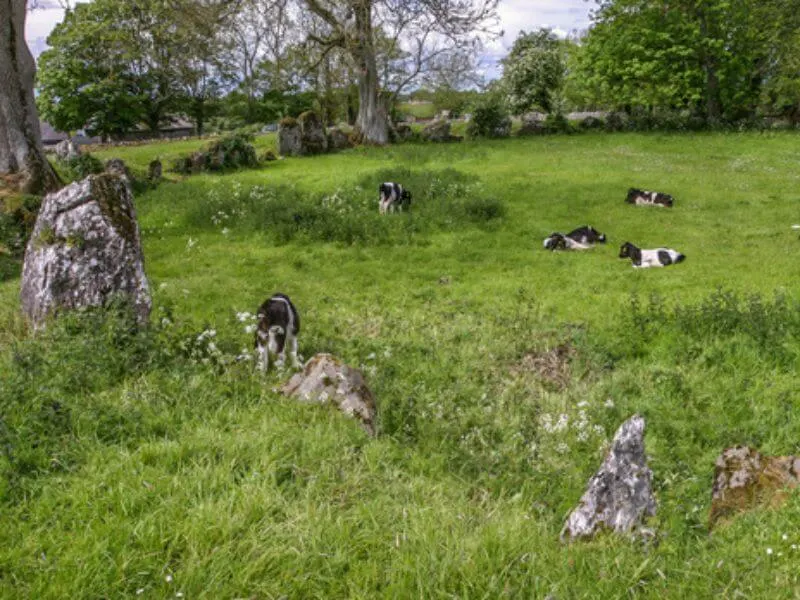
Many tales explore the ties between Áine and the Otherworld, in particular the fairy realm.
It is believed that Áine ruled this enchanted kingdom as a fairy queen with her exceptional knowledge and wisdom. This is why she is also known as the Goddess of Fairies.
Áine Fairy Queen frequently depicted in artistic images as wearing loosely fitting clothes, such as a shawl, surrounded by the smaller sized faery folk and Celtic spirits.
Áine Celtic Goddess of the Moon
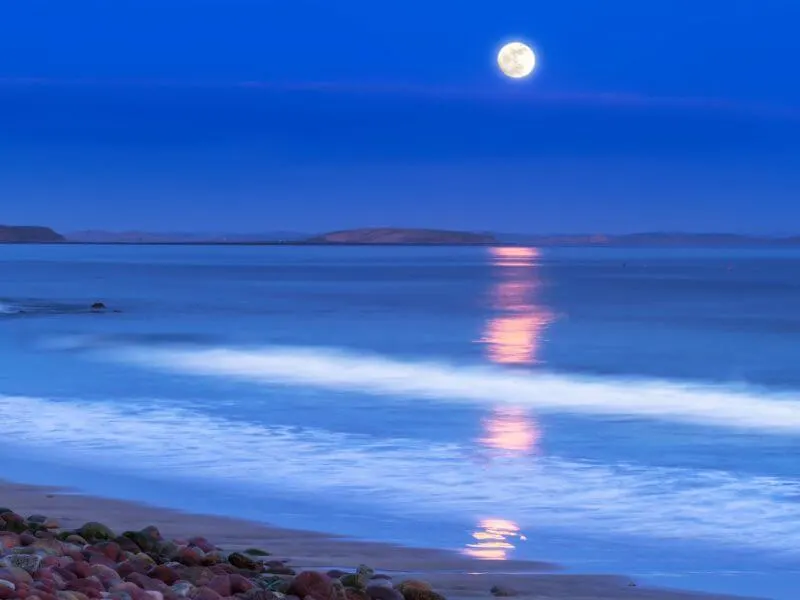
There are some folklore stories that also connect Áine with the moon.
Lunar cycles are representative of fertility and the different phases in life. (The Brigid Goddess is another Irish Fertility Goddess.)
Some rituals to the Goddess Brigid were centered around the full moon in her role as Moon Goddess.
One such tradition from County Limerick was to bring the sick to the shores of lakes or banks of rivers on the sixth night of the full moon.
If they could not be cured in one to two nights, then Áine would soothe their death passage from the mortal realm with song and music.
Áine Goddess Powers
While Áine is known for her many abilities, shapeshifting is one that most often comes to mind.
As the Fairy Goddess she could use this magical ability to transform into different forms.
The Morrigan Triple Goddess and Celtic Goddess of War is also well known for her shapeshifting abilities.
Sacred Sites of the Goddess Áine
Áine has always been particularly celebrated and worshiped in Munster in the South of Ireland.
County Limerick in particular has a specially strong connection with the Goddess Áine.
Two of the most significant sites related to this Goddess are located in this county.
Cnoc Áine
Cnoc Áine, which is known as Knockainey Hill in English, is one sacred space. For centuries, this small hill has been associated with the Goddess.
(The name Cnoc Áine literally translates to Áine’s Hill in Irish.)
Some legends refer to it as the entrance to the fairy world, where Áine was seen as a fairy queen.
Recent archaeological surveys and research have uncovered several prehistoric monuments in the direct locality.
This is an indicator that this location has been a significant one for some time.
Rituals and worship for Áine have long been conducted at this sacred site.
The most well known of all of these is the midsummer celebrations on St. John’s Eve (June 23).
Fires would have been lit in honor of the Goddess Áine and her connections with the brightness, the sun and the summer.
It was believed that the Áine would emerge from the Fairy Kingdom beneath the hill and bless the worshipers for the coming year.
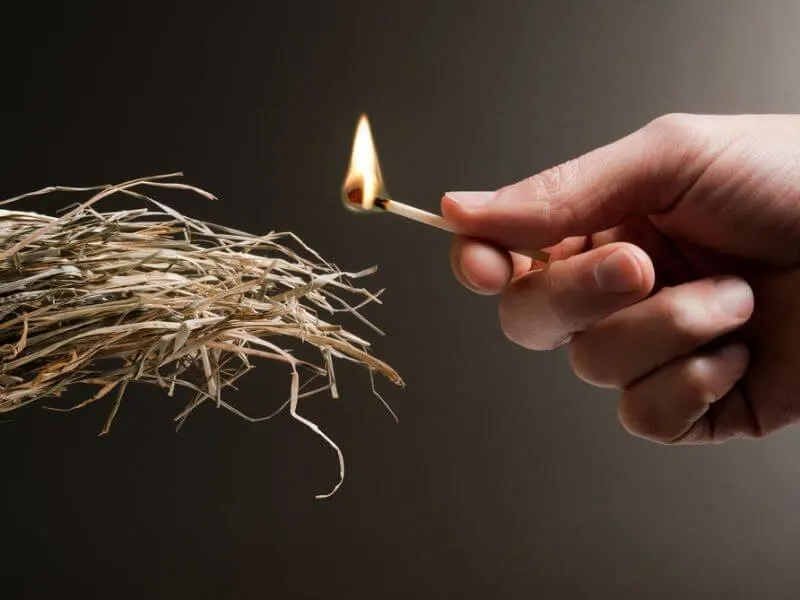
In some cases, straw torches known as clíars would have been paraded around the nearby fields.
This was carried out to bless the harvest and bring good luck, as Áine was believed to have influence and command over crops and animals.
Bonus Tip: If you would like to visit Cnoc Áine yourself and experience the setting and the view, this is possible. A nice walking route of the area is available.
Lough Gur
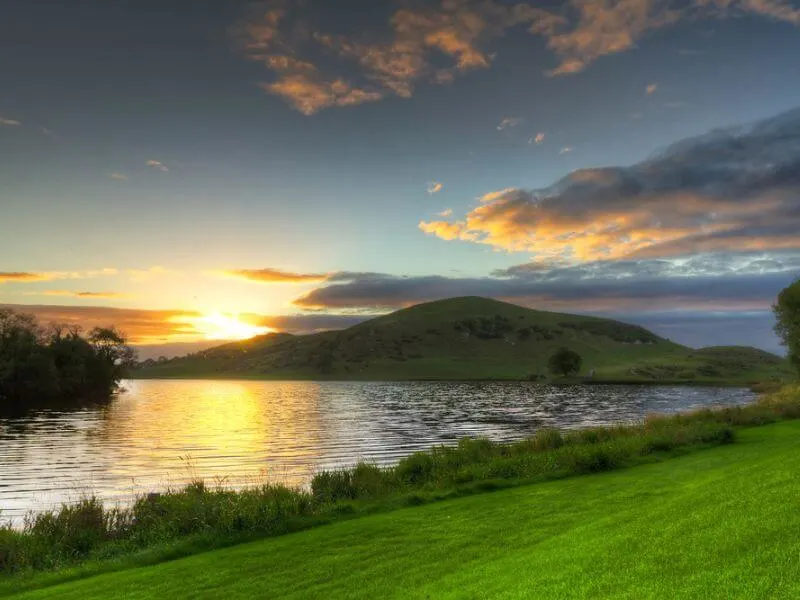
Not far from Cnoc Áine lies Lough Gur. This tranquil lake in County Limerick has strong links with the Goddess Áine, as well as other figures from Irish mythology.
It is said to have magical properties and was a favorite location of the fairy folk, who were under Áine’s rule.
One of the tales of the Goddess Áine is directly connected with an encounter at the lake.
While Áine was bathing in the lake at one point, Gearóid FitzGerald, the third Earl of Desmond, is supposed to have seen her.
What happens next depends on which version of the Áine Goddess story that you hear.
In the happier variant, the Earl falls for Áine and they marry and have children.
The alternative story is that FitzGerald rapes Áine. In revenge for this act, Áine transforms him into a goose.
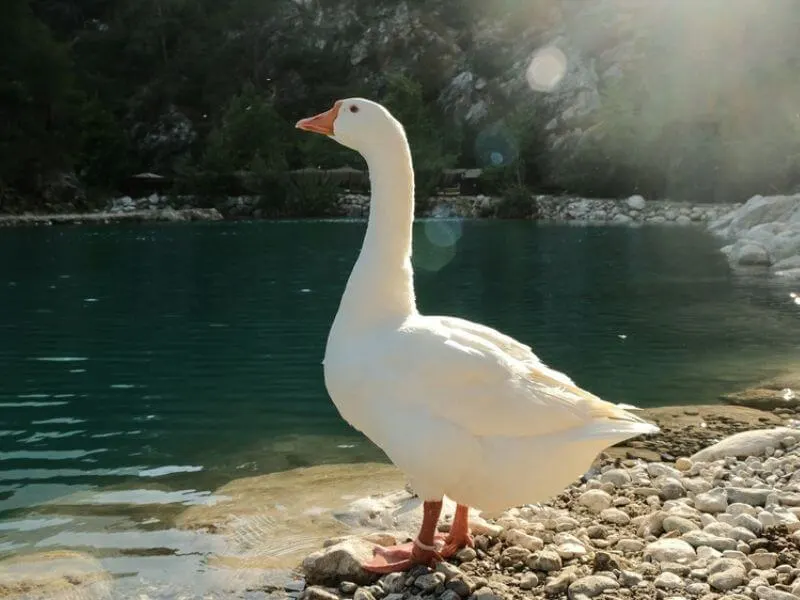
Other Sacred Sites
There are several other locations spread through Ireland that are connected with Áine.
Dunany in County Louth gets its name from Dún Áine, or Áine’s Fort.
There is another similar fort named after Áine in County Derry, known as Lissan, or Lios Áine.
In County Tyrone there is also an ancient passage tomb that is referred to as Queen Anya’s Tomb, or Anya’s Cove. This is widely believed to be connected to the Goddess Áine.
Áine in Celtic Mythology and Irish Folklore
Áine and Ailill Aulom
Áine is depicted as a beautiful woman. Her stunning looks caught the eye of many men, including Ailill, who was the King of Munster.
Legends tell of Ailill forcing himself upon Áine. She fought back and in the process bit part of his ear off.
This ultimately led to his downfall as king because only those without physical flaws were deemed to be worthy kings.
Ailill became Ailill Aulom after this event. The word “Aulom” can be translated as “one eared”.
Áine and Manannán mac Lir
The relationship between Áine and Manannán mac Lir (sometimes referred to as Manannán) is not always very clear.
Some stories say that the connection between the two was that of a father and daughter, but Áine also is mentioned as his lover and wife.
Manannán is the Celtic God of the Sea and a powerful deity in his own right.
The bond between the Áine and Manannán enables Áine to further expand her influence to the realm of water.
Áine Goddess Symbols
As well as being connected with the sun and light, other symbols from nature are tightly linked to the Goddess.
Goddess Áine and the Red Mare
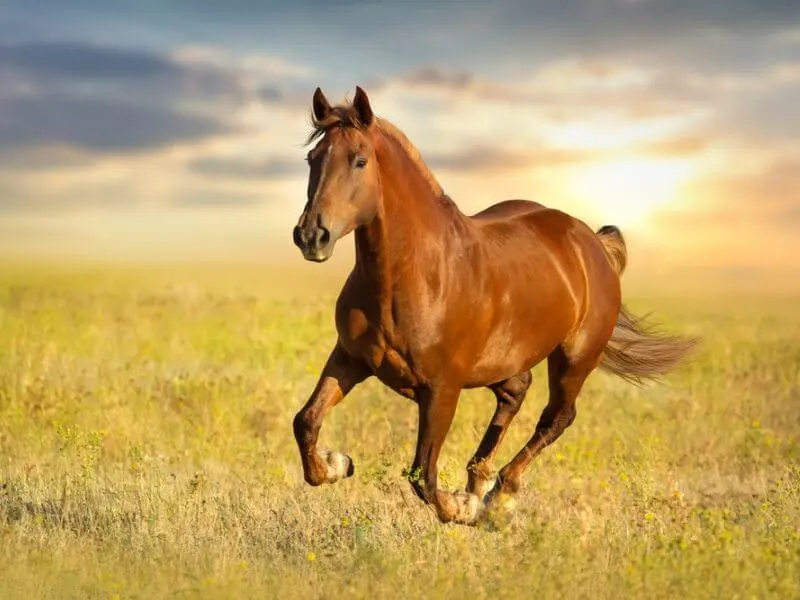
Áine could change form into other creatures. Of all of the sacred animals she is associated with, it is the red mare, which is most well known.
In Irish, the red mare is lair derg.
In this form, it was believed that she could traverse at speed from the fairy world into the world of humans and back again.
Áine Celtic Goddess and the Yew Tree
Áine is closely connected with the yew tree.
In ancient Celtic tradition, this tree is one of the most important of all Irish Trees and is protected against harm by the old Brehon Laws.
Several place names in Ireland are connected with yew trees such as Mayo (Maigh Eo) or “Plain of Yew Trees” and Youghal (Éochoill) or “Yew Wood”.
There is also thought to be some connection between Áine and Eoghan, who was possibly her son, or the son of her avatar the Goddess Sadhbh.
The name Eoghan translates to “Born of the Yew Tree”.
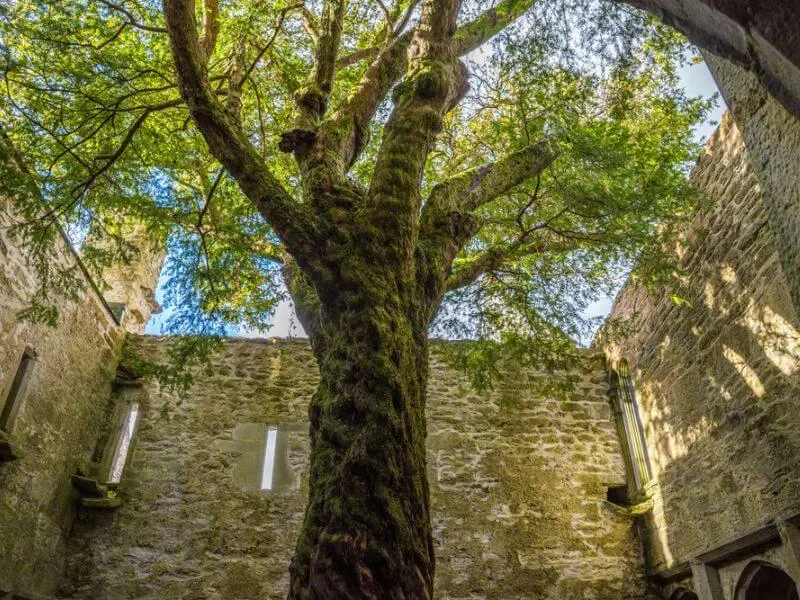
Áine Goddess as a Modern Goddess
Midsummer Celebrations
For centuries, Midsummer celebrations of the Goddess Áine have taken place.
This is the perfect time to rejoice and celebrate the Summer Goddess.
The popularity of this practice waned as the influence of the Catholic Church grew.
In recent times, there is renewed interest in Irish and Celtic mythology.
The Irish Gods, such as the Dagda and the God Lugh, and Irish Goddesses, such as the Goddess Fand, are seen as connectors between our everyday lives and the natural world around us.
Through the fire festivals of Imbolc, Beltane, Lughnasadh and Samhain, and the solstices we can feel more in tune with nature.
Bonfires, feasts and dancing are now part of the rituals that are embraced while honoring Áine.
Áine Naming Traditions
The Irish name Áine is not only connected with the famous Goddess, it is also a popular baby girl’s name.
The positive meanings associated with the name help to propel its popularity.
Many people search for names that mean bright or names that mean light. The baby girl name Áine can be interpreted to mean both.
The name is short and simple and is deeply rooted in Irish culture and heritage.
These factors are important for many parents selecting a name for their little ones.
The Áine name is possibly the most popular of the Irish Goddess names.
Other people also select the names of Irish Deities, such as Áine, for their pets. Celtic Goddess Names for dogs is just one example.
Áine Modern Devotion
Even today the Goddess Áine has many followers.
As a powerful Goddess of Ireland, Áine’s wide ranging appeal and interesting history has attracted many devotees.
Some of these people are pagans, who are drawn to the powerful energy of this Irish Goddess.
Rituals, meditations as well as offerings to Áine play an important part of the worship of this goddess.
Áine Irish Goddess FAQ
Who is the Celtic Goddess Áine?
The Goddess Áine is a key Irish Deity in Celtic mythology.
As the Goddess of Love, Light and Summer, she plays an interesting and central role in the Celtic myths and legends.
In some folklore tales she is portrayed as a fairy queen who presides over the magical realm.
During challenging times, she showed resilience and fortitude and the ability to hold her ground.
How do you pronounce the name Áine?
Áine is a popular Irish name given to girls.
There are many videos available online on how to pronounce the name. Once you know how, Áine pronunciation is relatively simple.
Áine is pronounced “AWN-ya”. The first syllable is longer than the second.
Where are the Goddess Áine’s sacred sites?
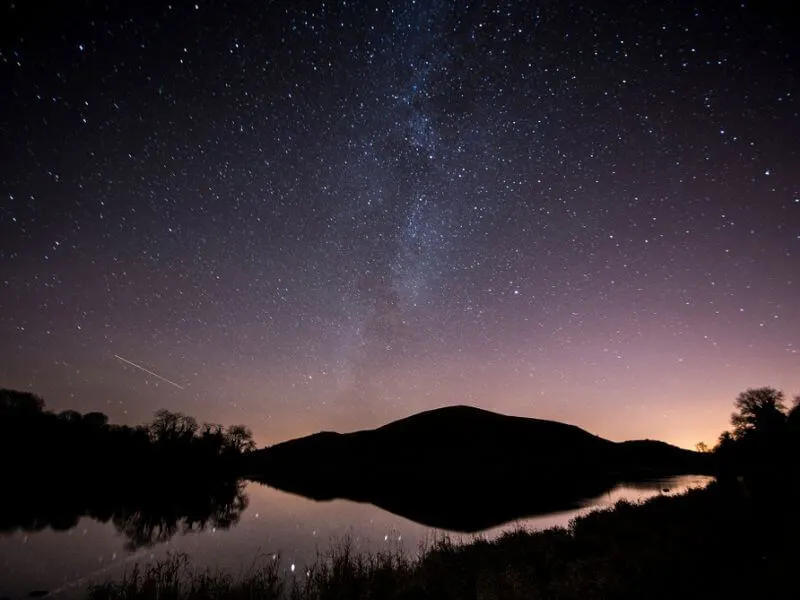
Cnoc Áine (also known as Knockainey Hill) and the nearby Lough Gur are the two most significant sites connected to the Goddess Áine.
Both of these sites are located in County Limerick.
The belief and worship of this Goddess was always particularly strong in Munster in the South of Ireland.
Irish Gods and Goddesses
Discover more about the origins and legends of Irish Gods and Goddesses on our website.
For those of you who wish to know more about Celtic art as well as tradition, we suggest reading about Celtic Symbols and Art and famous Celtic Knots.
